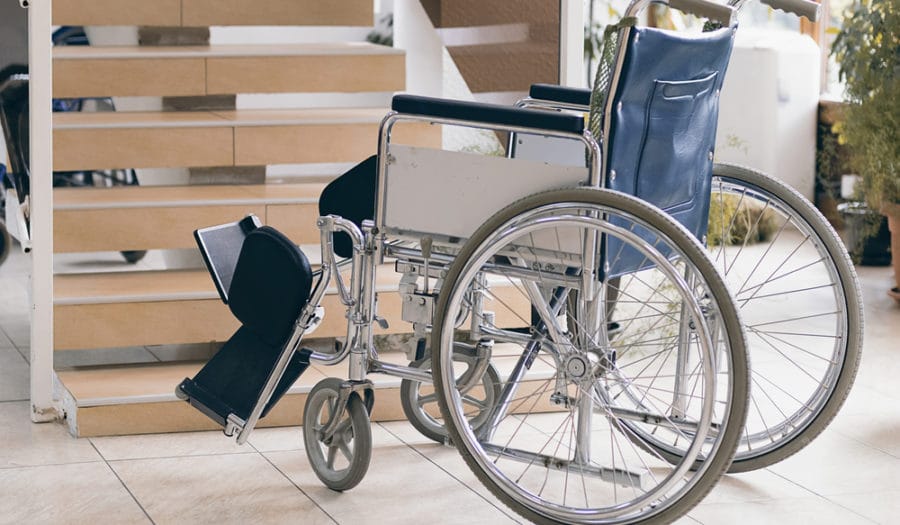How to Plan Mobility Renovations
How to Plan Mobility Renovations? Some home designs can be quite unfriendly for your loved ones with mobility limitations. Staircases, high countertops, slippery bathroom floors and poor lighting can hamper the independence of your loved ones. Thankfully, many of these issues can be solved through mobility renovations.
Mobility renovations can significantly enhance accessibility and independence, empowering you or your loved ones to navigate daily routines with ease and safety. Whether you’re anticipating future needs or tackling current limitations, meticulous planning is crucial for a successful outcome.
Follow these steps to plan, design, and execute successful mobility renovations:
Determine the Needs of Your Loved One
Everyone has different challenges and needs that can be aided or solved thanks to mobility renovations. Perhaps your loved one is a senior who simply needs their kitchen to be a bit more accessible. Maybe your loved one uses a wheelchair and needs doorways and staircases to be altered. Once you have taken stock of your loved one’s mobility needs, it becomes easier to determine what changes should be made to make their home safer and more accessible.
Remember:
- Involve your loved one in every step of the process. Their input and preferences are crucial.
- Prioritize safety and functionality. Aim for solutions that promote independence and minimize risk of falls or injury.
- Start small and scale up as needed. You don’t have to renovate everything at once. Begin with the most pressing needs and expand as necessary.
By carefully assessing your loved one’s needs and planning renovations accordingly, you can create a home that fosters independence, dignity, and safety for everyone. This investment in their well-being will bring immense value and peace of mind to both of you.
Consider Future Needs
Our needs can change as we age, sometimes quite dramatically. If you’re planning mobility renovations, an important consideration is to consider future needs in addition to current ones. Your loved one may currently be able to walk, but may need a wheelchair in two or three years’ time. While current space may be adequate, a wheelchair may require wider doorways and more ample turning space. If your loved one plans to remain in the home for a considerable period going forward, it is advisable to account for potential changes in mobility.

1. Progressive Conditions: If your loved one has a progressive condition like arthritis or Parkinson’s, anticipate gradual changes in mobility. Opt for modular or adaptable solutions. For example, choose doorways with removable side panels to widen them later, or install countertops with adjustable heights.
2. Multi-functionality: Think beyond “accessibility features” and embrace flexible design. For instance, a wider doorway wouldn’t just benefit wheelchair users, but also make carrying furniture or bulky items easier for everyone.
3. Universal Design Principles: Incorporate elements that cater to a wide range of abilities, not just your loved one’s current needs. These include lever door handles, accessible sinks, and step-free entry points. This inclusive design benefits everyone and adds long-term value to your home.
4. Future Medical Equipment: Consider potential needs for specialized equipment like hospital beds, hoists, or oxygen tanks. Ensure doorways and hallways are wide enough to accommodate them, and leave space for maneuvering within the room.
5. Age-friendly Lighting: As vision can deteriorate with age, install brighter lighting with dimmer switches to adjust for changing needs.
6. Technology Integration: Smart home features like voice-controlled lighting, thermostats, and appliances can significantly improve independence and ease of living as mobility declines.
Remember: Flexibility is key. By planning for potential changes, you create a resilient and adaptable home that supports your loved one’s comfort and independence, now and in the future. This not only fosters well-being but also increases the home’s overall value and marketability.
Schedule an In-Home Consultation
Do not use a mobility renovation company that gives you an estimate over the phone or by email without having met you or having seen your home in person. An in-home consultation is very important to accurately assess the mobility and accessibility limitations of your home and to give you a proper quote. Alleviate the stress of your loved ones and make sure everything is done right the first time by scheduling an in-home consultation.
- Unique Homes: Generic estimates miss your home’s nuances. Professionals need to see the space to assess challenges, measure accurately, and consider layouts.
- Tailored Solutions: Without seeing your home, companies can’t personalize solutions for your loved one’s needs and preferences. In-home consultations lead to customized recommendations for optimal functionality and comfort.
- Accurate Costs: Phone estimates can be inaccurate, leading to budget overruns or inadequate solutions. In-home consultations ensure the quote reflects the project’s complexity, avoiding surprises.
- Build Trust: Meeting professionals face-to-face allows you to ask questions, gauge expertise, and build trust. This is crucial for informed decisions and peace of mind throughout the process.
- Uncover Hidden Issues: In-person assessments can reveal unforeseen structural, electrical, or plumbing issues missed by phone estimates. Early detection saves time and money down the line.
In-home consultations are an investment in peace of mind. They ensure accurate quotes, tailored solutions, and the confidence that your loved one’s needs are met effectively. Don’t settle for generic quotes – schedule an in-home consultation for a successful mobility renovation from the start!
Ask Others
You likely know many people who have had their houses improved thanks to mobility renovations. If you don’t, you can ask around on the internet, through friends, or through local connections. They can advise you about the benefits of mobility renovations and perhaps even offer advice on some things you had not considered – like opting for a stove with front controls instead of knobs at the back that are harder to reach.
- Seek diverse perspectives: Don’t limit yourself to one source. Gather information from a variety of individuals and professionals to gain well-rounded insights.
- Ask specific questions: Tailor your questions to your specific needs and concerns. This will help you get targeted and relevant advice.
- Be mindful of online advice: While online resources can be valuable, remember to verify information with qualified professionals before making any decisions.
By leveraging the wisdom of others, you can gain valuable inspiration, practical tips, and a deeper understanding of what to expect. This collaborative approach will ultimately lead to a more successful and personalized mobility renovation for your loved one.
If you follow these steps, you can help plan mobility renovations that help your loved one maintain their independence and safety in their own home. To get in touch to schedule renovations, you can fill out an online form or give us a call at (613) 727-9427






